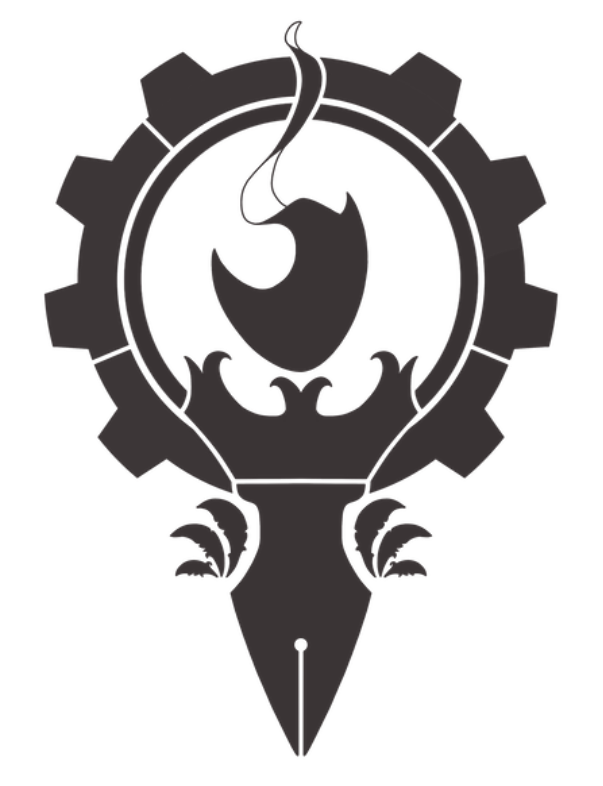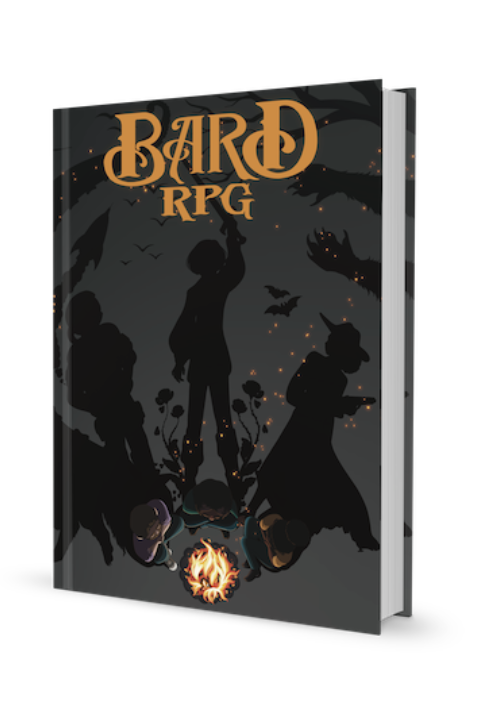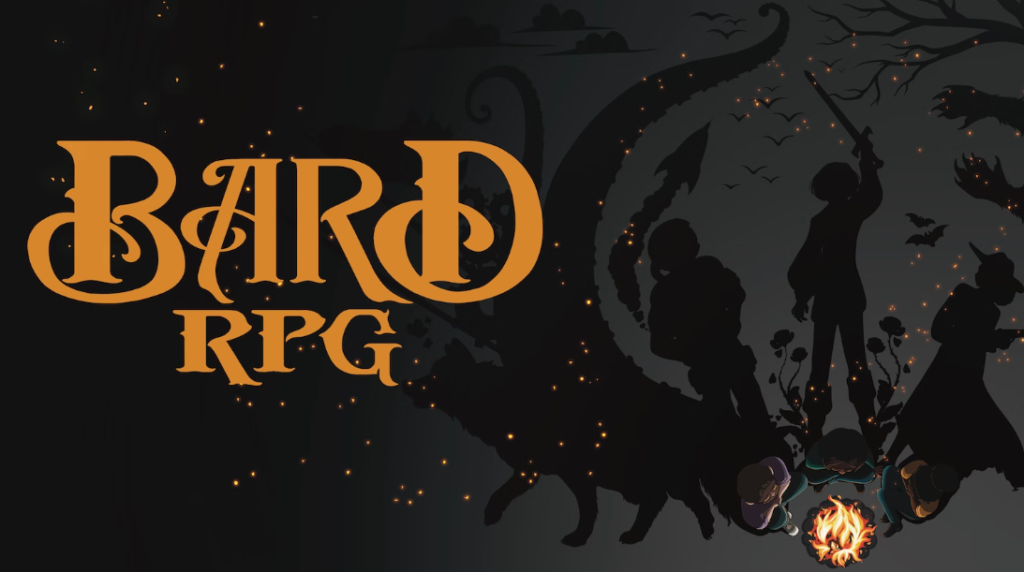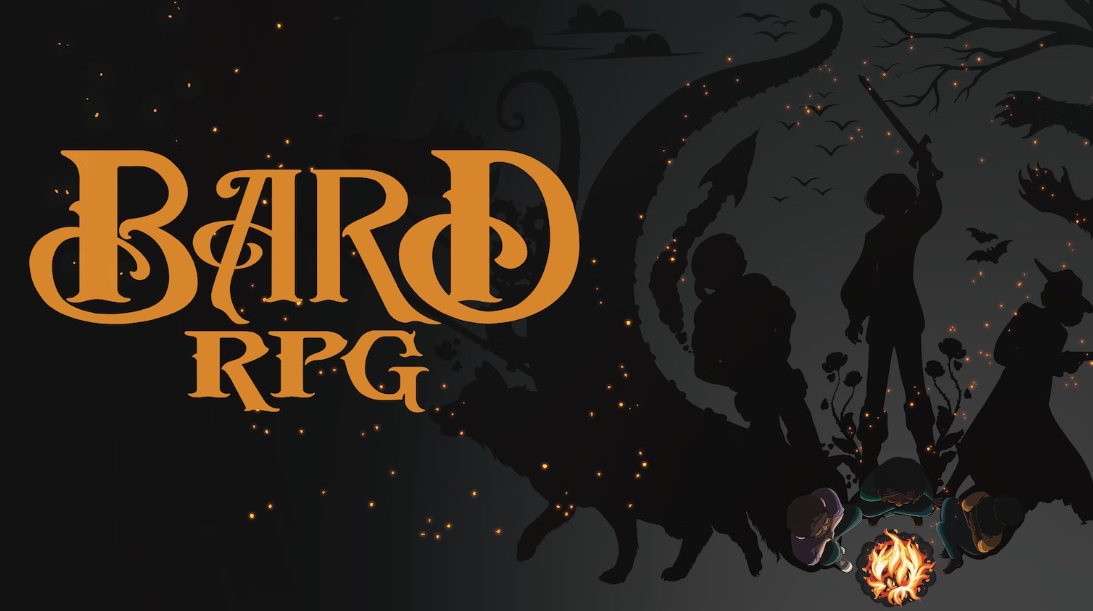Review of Bard RPG, a character and story focused game system!
*note: this review was done using a pre-release copy of Bard RPG, so some elements may change from the pre-release to final release*
Jump to:
Bard RPG is made for all ages
Bard RPG is made for all ages, so it’s great for both kids and adults. You can adjust the game to any story or level to make it applicable for kids, teens, or adults without needing to homebrew or adjust any part of the game, and the mechanics are easy to follow with a clear tracking sheet that only has four stats.
Some reading and understanding is required to be able to create characters based on the archetypes, but with a little reviewing, I was able to explain to my kid (4yo) well enough to make some awesome characters together.
Bard RPG can be set anywhere

Because Bard RPG is genre agnostic, it is uniquely positioned to work equally well as a rules system for a game about children’s toys going on an adventure to find their lost owner or for an edgy magical steampunk adventure with no modification. You don’t need to tweak stat blocks or even rename or spin any of the abilities on the character sheet – it is built to, at its core, follow character themes that are found in any story and then build from there.
Those two examples I gave, the children’s toy adventure and the steampunk adventure, were two scenarios we actually tried out while playing the game. The first, I played with my kid, creating characters based on my kid’s toys. The second, I made based off of characters from Arcane and ran a few test scenes to see how well the system worked in a different setting (specifically one that tied into the magic and tech elements that are present in Bard RPG). Both ran smoothly with no adjustments.
Your character in Bard RPG
The primary features of Bard RPG focus on building and defining your character, which I love. Instead of starting with your stats or letting your stats determine what roll you play, it’s the other way around (which feels much more natural). You choose a Will and an Ability set for your character, which define who your character is and the type of roll they will take. Once you do that, your Will and Ability determine your special abilities and your ability stack to create the stats in your character sheet.
Your Will archetype is what motivates your character and comes from core story roles, like The Innocent, The Hero, and The Rebel. There are six to choose from, and each builds a foundation for why your character wants to do something, in addition to providing you with your special abilities.
Your Ability archetype is how your character can go about doing what they do. These are the basic skills your character has and define how they are able to interact with the story. There are six Ability archetypes to choose from as well, including the Magician, Explorer, and Caregiver. Each one determines how well you can use the four stats for the game.

The way this was set up actually made it REALLY easy to create a character. We never focused on the numbers until we got to the very end of character creation, and, by then, they were already set for us.
One of our characters, for example, was my kid’s stuffed cat toy. We chose The Innocent archetype for his Will and the Caregiver archetype for his Ability set, and that was all we really needed to do for character creation. Those two choices determined our stats, and we were ready to go.
I will also say, I had A LOT of fun just making characters with this, even before playing any scenes, and seeing how well they lined up. We made characters for a bunch of my kid’s toys (so not based on an existing story), and I also made characters from TV shows, which was really easy to do because I just needed to match the archetypes to the roles they already filled in the show.
Clear and intuitive mechanics in Bard RPG
Using actions from your archetype abilities
Once you pick your archetypes, it sets the dice you can roll for each of your four stats (physical, social, magic, and tech) and your special abilities.
Your four stats are your core rolls that you can make for general checks and any action that could need a roll. Your special ability is unique in that it can only be used once per chapter (main story section) and lets you roll more dice than even your highest ability.
You’ll need to work with your fellow story characters to roll within the required challenge difficulty in order to succeed (potentially multiple times for very difficult challenges or strings of challenges).
At most, you roll 6d6 for your special ability, so there is a bit of math for your highest rolls, but it was also easy to understand what to roll when, and I just helped my kid with adding for some of our bigger numbers.
Plot Points
In Bard RPG, you can also earn Plot Points that help drive the story and develop characters. Plot Points can be earned by doing particularly relevant actions with your character, completing key challenges, fostering new relationships, and more, encouraging players to drive the story and roleplay.
Plot Points can be spent to level up your character’s abilities and create plot twists, which allow players to significantly impact the story together.
Being able to earn Plot Points was an excellent game element, as it both encouraged RP and rewarded my kid for playing the game without having to track a bunch of XP. It also gave him the opportunity to seriously affect the story (which increased his stake in what happened). In our game with his toys as characters, there was one point where he used a plot point he had earned to make Bigfoot come find the group of toys in the woods and help them find their way. It was silly and AMAZING, and that element created space for my kid to do that.
What did my kid think about Bard RPG?
I asked my kid (4yo) what he thought, and, in his words, “I liked all the dice! And I liked making Bigfoot come into the story. And I liked that Kitty was my character and he was really nice but also kind of silly.”
My kid was able to understand the mechanics and had a good sense of who his character was. He also really liked getting to affect the story and was very invested in earning more story points so he could continue to add those cool elements!
Overall thoughts on Bard RPG
Bard RPG is a versatile game system that really hones in on the importance of a player’s character first and in a way that feels natural and intuitive. The mechanics are effective while also being easy to understand, track, and develop as characters level up. Elements, like Plot Points, emphasize player agency and influence in creating the game alongside the storyteller.
It’s a great game for playing with kids, and a great game for creating awesome worlds (like the Arcane characters and scenes I also tested out) that can be difficult or time consuming to create in other systems. I REALLY like Bard RPG as a general go-to system and am looking forward to using it when we play our premade adventure!
Find a copy of Bard RPG
Bard RPG is currently funded from the 2022 Kickstarter and will be available soon. It is also being used in the upcoming Dragon Dowser game being released by Hatchling Games!

If you liked this post, make sure to subscribe to the TTRPGkids monthly newsletter to stay up to date on the latest reviews, tips and tricks, game and podcast list updates, and more! Thank you for playing tabletop RPGs with your kids and sharing this awesome hobby with the next generation!

